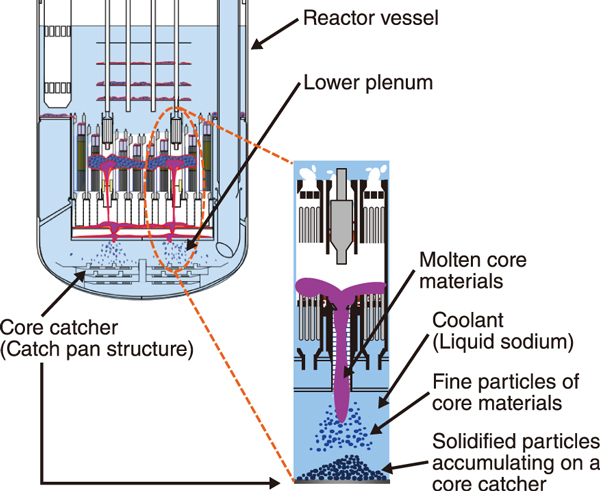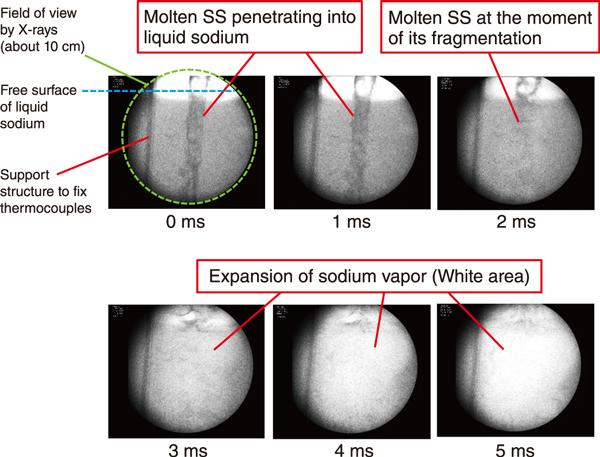
Fig.1 Concept of the in-vessel retention of molten core materials by a catch pan structure inside the reactor vessel

Fig.2 X-ray images of molten stainless steel (SS) penetrating into liquid sodium
To deploy the sodium-cooled fast reactor, which is expected to be one of the next-generation innovative nuclear reactors, it is necessary to enhance its safety. Therefore, it is important to ensure that molten core materials are cooled and confined within the reactor vessel (in-vessel retention) in the event of a severe accident in which the core fuel melts down, so that the impact of the accident will not extend outside the reactor vessel.
If molten core materials reach the bottom of the reactor vessel during a severe accident, the extremely hot molten core material can create a hole at the bottom, and the molten core materials may leak out of the reactor vessel. To prevent this event, safety measures are being considered to retain the molten core materials in the core catcher inside the reactor vessel (Fig.1). To confirm the effectiveness of this safety measure, basic experiments were conducted using a molten metal with low melting point and water as simulants for a molten core material and coolant (liquid sodium), respectively. The experiments revealed that molten core materials penetrating into sodium are likely to fragment into solid particles and settle and deposit on the core catcher. However, an important issue is to confirm the behavior of molten core materials under conditions close to those in the actual reactor environment.
In this study, we conducted the world’s first visualization experiment using molten stainless steel as one of the core component materials of the sodium-cooled fast reactor by dropping this core material into liquid sodium in a test vessel. The process was recorded as a movie at a high frame rate using an X-ray device and a high-speed camera.
Fig.2 shows the rapid fragmentation of the molten stainless steel as it penetrates into liquid sodium. The observation of the solidified stainless steel deposited at the bottom of the test vessel revealed that a small amount of liquid sodium entered into the molten stainless steel when it fell into the sodium coolant, and the surrounding stainless steel was rapidly fragmented into particles when the entrained sodium expanded as vapor. Furthermore, from the response of several thermocouples placed in the sodium, we confirmed that once the molten stainless steel was fragmented, it was rapidly cooled and solidified by the sodium.
This study demonstrates that the high thermal conductivity of sodium is effective not only for cooling the core fuel during normal reactor operation but also for cooling molten core materials during severe accidents. Furthermore, this study also contributes significantly to improving the effectiveness of safety measures to achieve in-vessel retention.
This achievement is a part of the results of “Technical development program on a common base for fast reactors in FY 2020” by the METI.
(Kenichi Matsuba)